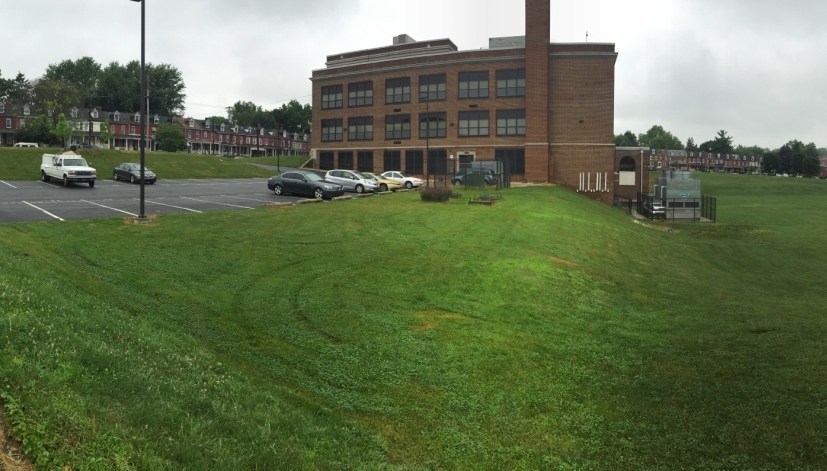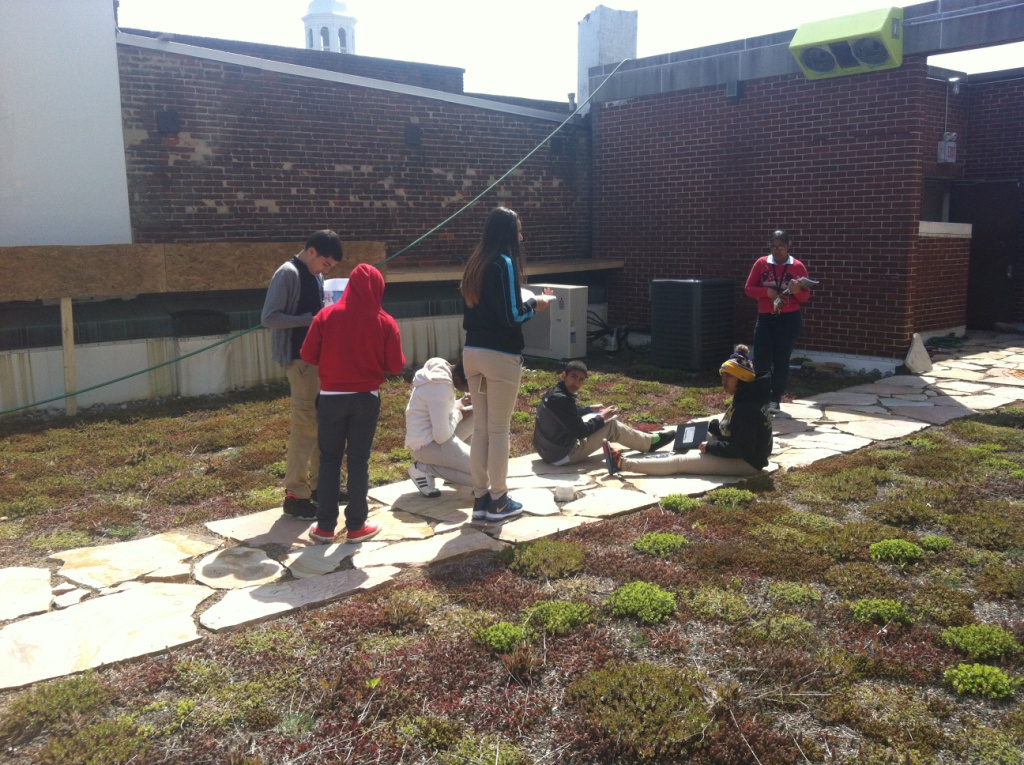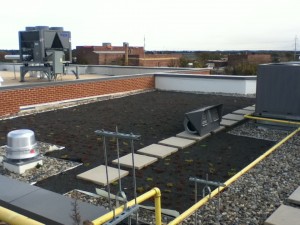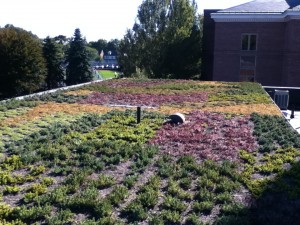- Hand Middle School
- Upstream / Downstream – Experimental Learning
- City Schools Leading the way in Green Roofs
Hand Middle School
The Lancaster County Conservancy and City of Lancaster are partnering with Hand Middle School to assist in develop a schoolyard habitat that will both capture stormwater while educating youth in the school and throughout the community.
Vision Statement and Outcomes:
“The Hand Schoolyard Habitat project aims to develop a multi-use schoolyard habitat space that serves as a venue to catalyze meaningful outdoor learning experiences for underserved youth, while also helping to meet some of Lancaster city’s pressing environmental issues.”
 Hand Schoolyard Habitat 3D Image
Hand Schoolyard Habitat 3D Image
The idea is to create a natural space for human and non-human life (native plant and animal species) to enjoy. This natural space will provide an opportunity for students to be enriched through the experience of nature observation and applied cross-curricular learning. Through the sustained support of community organizations, school staff, students, and our families, the space will be able to fulfill our vision. The three outcomes of the schoolyard habitat project are;
(a) increasing ecological literacy amongst urban youth,
(b) increasing the diversity of habitat space in an urban environment and helping to mitigate storm-water runoff, and
(c) supplying a nutritional food source for the youth and their families.

Benefits of a Schoolyard Habitat:
Schoolyard habitats have a wide range of benefits that positively impact the local community (both human and non-human components), beyond providing a healthy food source and providing an aesthetically appealing space to an urban environment. Evidence of these benefits is demonstrated in the collaborative problem-solving of Green Hands students during a continuing school grounds habitat restoration project.
To learn more about how you can get involved or contribute please contact Fritz Schroeder, FSchroeder@lancasterconservancy.org, 717-392-7891 x 207
…………………………………………………………………………………………………………………
Upstream / Downstream – Experiential Learning

Through the Upstream/Downstream program led by the Lancaster County Conservancy two middle school classes (Martic Middle School in Manor Township and Wheatland Middle School in the School District of Lancaster) spent a half day touring green infrastructure projects in Lancaster City during the spring of 2014. Pictured above are Wheatland students journaling on the green roof at Tellus 360. Below are students from Martic Middle School at the Wolf Museum Residential Demonstration project.
The green infrastructure tour was one component of the program that involved in school education along with a full day stream study at Climbers Run Nature Preserve and a full day on the bay with the Chesapeake Bay Foundation.
By seeing the downstream impact of stormwater and other pollution firsthand, the students gained a more tangible understanding of their own actions upstream as well as the purpose of Lancaster’s green infrastructure plan.
For more information on how your school can tour green infrastructure in the City of Lancaster please contact Fritz Schroeder with the Lancaster County Conservancy.
City Schools Leading the Way in Green Roofs
A math word problem: The School District of Lancaster has three. So does Franklin & Marshall College. If there are six green roofs, covering 41,370 square feet, what does that equal?
a) Extended life of a roof
b) Elimination of stormwater coming from a rooftop during an average rainfall
c) Reduced heating and cooling expenses
d) All of the above
Answer: D – All of the above.
You can find green roofs at Wharton, Ross and Lafayette Elementary Schools. You can also find them on top of the Wohlsen Sustainability Center, Weis Hall and Schnader Hall at F&M. Together,these green roofs eliminate some 800,000 gallons of stormwater every year. Pretty smart.


Newly installed green roof at Two year old green roof at F& M College
Wharton Elementary


